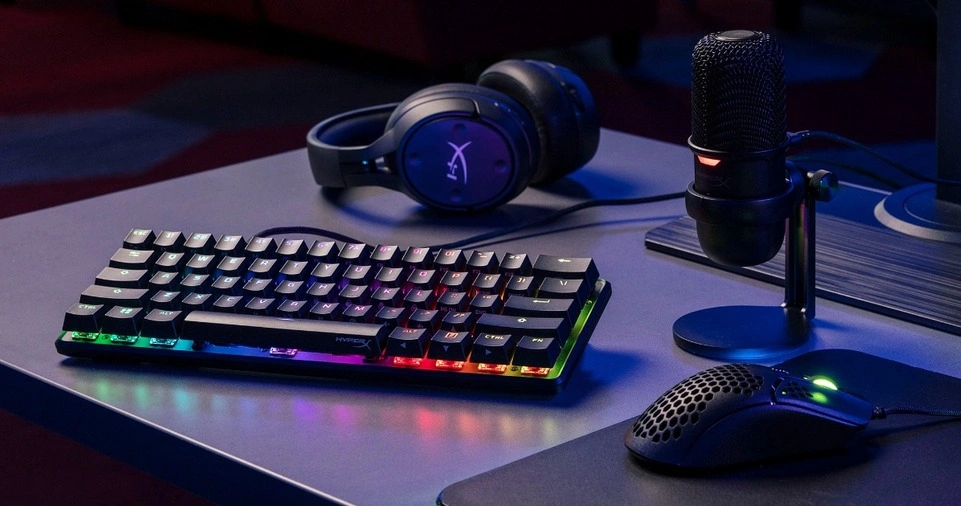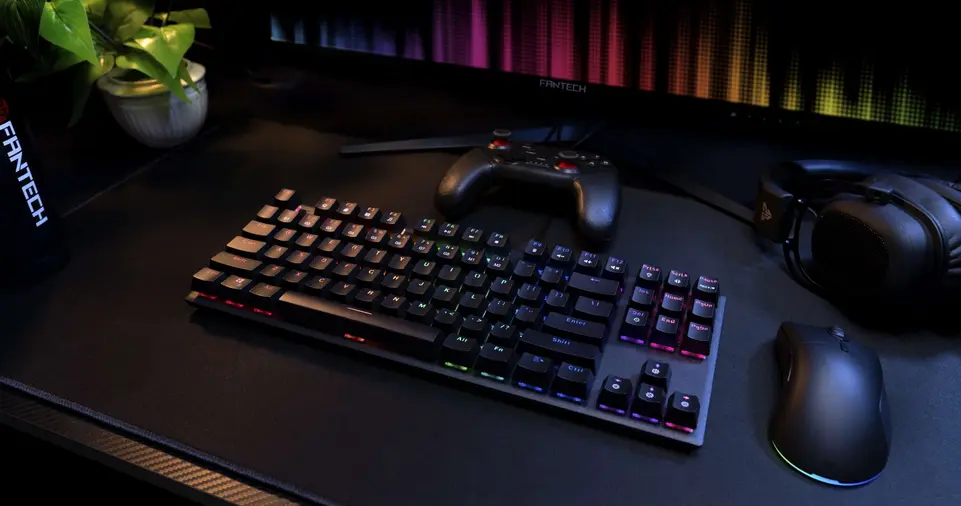Gaming peripherals play a crucial role in enhancing the gaming experience, offering comfort, precision, and customization that can give players a competitive edge.
Among the most critical gaming peripherals are the gaming mouse and keyboard, as they are directly responsible for in-game controls, responsiveness, and overall comfort.
Choosing the right gaming mouse and keyboard is not just about aesthetics; it’s about performance, ergonomics, and durability.
With countless options available, ranging from wired to wireless, optical to laser sensors, mechanical to membrane keyboards, and a variety of extra features, selecting the right combination can be overwhelming.
Whether you are a professional gamer looking for pinpoint accuracy or a casual player wanting a smooth and immersive experience, finding the perfect mouse and keyboard tailored to your needs is essential.
In this guide, we will explore the key factors to consider when selecting a gaming mouse and keyboard, discuss different types, and provide insights into which features matter most for various gaming genres.
Furthermore, we will dive into customization options, ergonomic considerations, compatibility with gaming setups, and software support that can enhance the user experience.
Different gaming genres require distinct mouse and keyboard attributes, so we will break down recommendations for FPS, MOBA, MMO, and casual gaming to help you make an informed decision.
By the end of this guide, you will have a clear understanding of what to look for when purchasing your next gaming peripherals, ensuring that you get the best combination of performance, durability, and comfort.
Choosing the Best Gaming Mouse

Understanding Your Grip Style
Your grip style affects the comfort, speed, and control of your gaming mouse.
There are three main grip styles that most gamers use:
Palm Grip
This grip is the most common and offers maximum comfort by allowing your entire palm to rest on the mouse. Best for FPS and RTS games, where long gaming sessions require comfortable handling.
Recommended mice:
Logitech G502, Razer DeathAdder V3 Pro.
Advantages:
- Reduces hand fatigue.
- Allows for steady control.
- Provides better accuracy in tracking.
Disadvantages:
- Slightly slower reaction time.
- Can be bulky for small hands.
Claw Grip
A claw grip involves arching your fingers to hold the mouse, which allows for faster clicks and quick movement.
Ideal for fast-paced FPS and MOBA games, where rapid response times matter. Recommended mice: SteelSeries Rival 600, Corsair M65 RGB Elite.
Advantages:
- Faster clicking speed.
- Better flicking accuracy.
Disadvantages:
- Increased strain on fingers over time.
- May not be comfortable for long sessions.
Fingertip Grip
This grip style uses only the fingertips to hold and control the mouse.
It allows for quick reactions and fast cursor movements, making it best for high-DPI gaming and precision aiming.
Recommended mice: Razer Viper Mini, Glorious Model O.
Advantages:
- Faster reaction times.
- Lightweight design enhances speed.
Disadvantages:
- Requires more finger movement.
- Less stable tracking.
Sensor Type: Optical vs. Laser
Optical Sensors
- Use LED light to detect movement.
- Offer better accuracy and more consistent tracking.
- Best for competitive gaming, where precision is critical.
- Examples: Logitech G Pro X Superlight, Razer DeathAdder V3 Pro.
Laser Sensors
- Use a laser to track movement on various surfaces.
- Work on glass and reflective surfaces.
- Can introduce acceleration issues, making them less ideal for FPS gaming.
- Examples: Corsair Dark Core RGB Pro SE.
DPI & Sensitivity: Why It Matters
DPI (Dots Per Inch) measures mouse sensitivity. Higher DPI settings mean faster cursor movements, but too high can lead to loss of control.
Recommended DPI for different gaming genres:
- 400-800 DPI: Best for FPS games (precise aiming).
- 800-1600 DPI: Great for general gaming.
- 1600+ DPI: Best for high-resolution monitors and fast-paced gaming.
Mice with adjustable DPI settings allow players to switch sensitivity on the fly, which is useful in games that require different levels of precision.
Wired vs. Wireless Gaming Mice
Wired Gaming Mice
- Offer zero latency, making them the top choice for competitive gamers.
- No need to worry about battery life.
- Examples: Zowie EC2, Razer Basilisk V3.
Wireless Gaming Mice
- Provide freedom of movement with no cable drag.
- Require charging but modern wireless tech has reduced input lag.
- Examples: Logitech G Pro X Superlight, Razer Viper Ultimate.
Additional Features to Consider
- Programmable Buttons: Useful for MMOs and strategy games.
- RGB Lighting: Aesthetic customization.
- Adjustable Weight: Helps personalize mouse feel.
- Polling Rate: Higher rates (1000Hz+) ensure smooth performance.
ALSO READ: How to Improve Your Mental Health with Simple Habits
Choosing the Best Gaming Keyboard
Mechanical vs. Membrane Keyboards
Mechanical Keyboards
- Each key has an individual mechanical switch.
- More durable (50M+ keystrokes).
- Faster response time, great for gaming.
- Recommended models: Corsair K95 RGB Platinum, Razer Huntsman Elite.
Membrane Keyboards
- Use a rubber dome under the keys.
- Quieter and more affordable but less responsive.
- Recommended models: Logitech G213 Prodigy, Razer Cynosa V2.
Switch Types in Mechanical Keyboards
- Red Switches (Linear): Smooth keystrokes, ideal for FPS games.
- Blue Switches (Clicky): Loud but tactile, great for typing and strategy games.
- Brown Switches (Tactile): Balanced for gaming and typing.
Keyboard Size: Which One to Choose?
- Full-Size (100%): Includes a numpad, great for multi-use.
- Tenkeyless (TKL, 80%): Saves space, popular for FPS gamers.
- 60% Keyboards: Compact, portable, and minimalistic.
Additional Features to Consider
- RGB Backlighting: Customizable aesthetics.
- Macro Keys: Useful for MMO and strategy games.
- N-Key Rollover & Anti-Ghosting: Prevents key input errors.
ALSO READ: How to Improve Customer Retention for Long-Term Success
Final Tips for Choosing the Best Gaming Mouse and Keyboard
- Match your peripherals to your gaming genre. FPS players prefer lightweight mice and TKL keyboards, while MMO gamers need extra buttons and macro keys.
- Test the feel of the mouse and keyboard. If possible, visit a store to test different models before purchasing.
- Stick to reputable brands like Logitech, Razer, Corsair, SteelSeries, and ASUS for quality and durability.
By carefully considering your grip style, sensor type, DPI, and extra features, you can find the perfect gaming mouse and keyboard to elevate your gaming experience. 🚀

